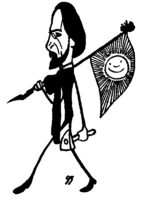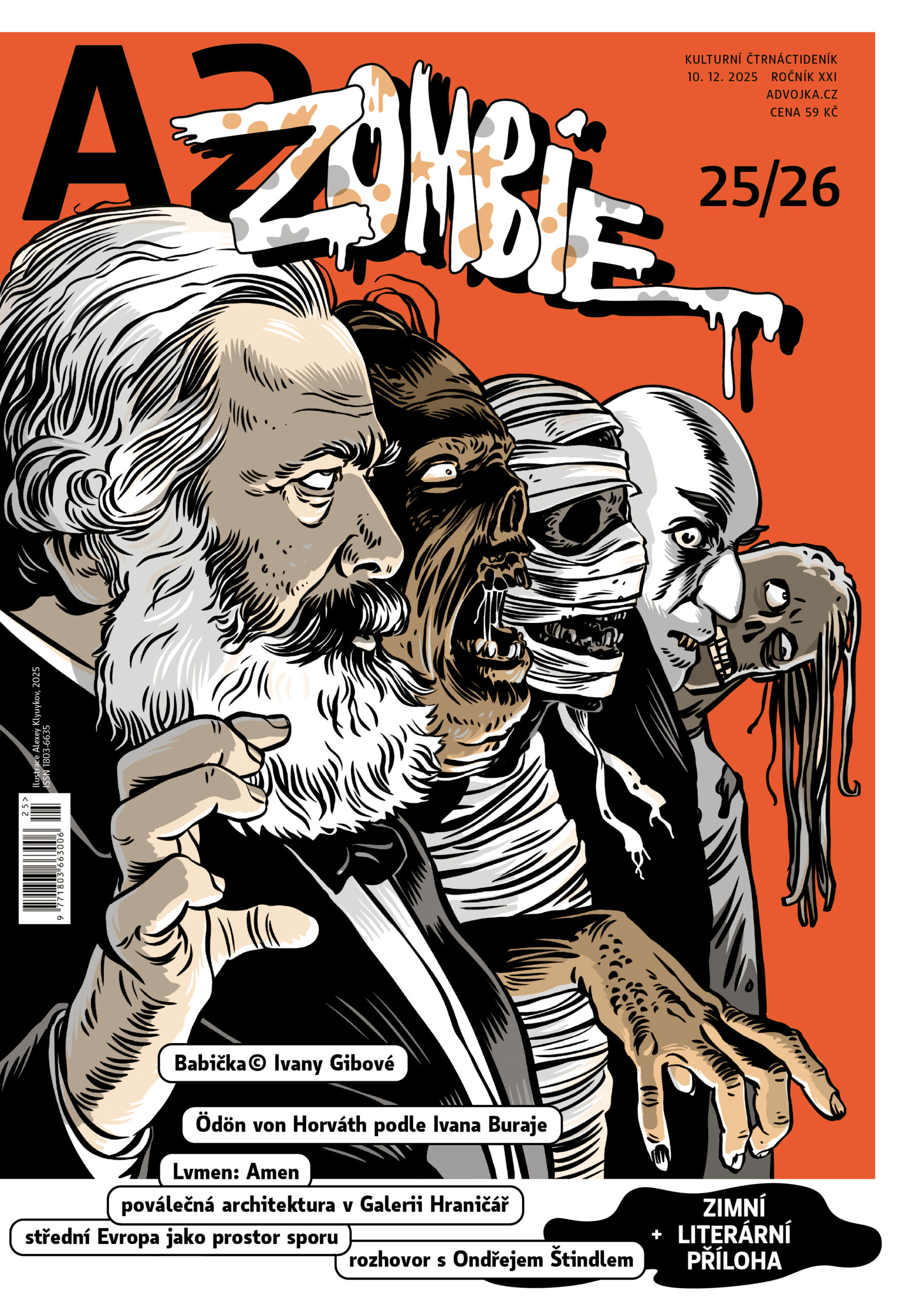Fast train to subconsciousness
LSD Depth Psychology according to Milan Hausner
In the Czech Republic, research into LSD and its possible utilization in psychiatry has a long, if interrupted, history. Probably the most renowned researcher was Milan Hausner whose book on clinical application of LSD behind the iron wall makes clear that there cannot be a doubt about the drug’s positive effects in treating psychiatric illnesses.
If we accept the contention made by Aldous Huxley in that along with a DNA and nuclear power, LSD is the most significant discovery of the previous century, we also need to note that the halucinogen, made popular with the hippies movement, did not leave a larger imprint on the current shape of the world. The substance that according to the psychedelic high priest Timothy Lear rules with a revolutionary force to change the world for the better, largely remains a recreational drug or object of sporadic research. One such research is, after a period of forceful research, being launched in the Czech Republic. At the same time, Czech readers now have available a study by psychiatrist Milan Hausner, LSD. Výzkum a klinická praxe za železnou oponou. With a long delay, the study brings a report about the probably most extensive experience with psycholytic clinical practice.
What Freud was missing
Hausner took part in the research on the possibilities of medical utilization of LSD between 1954 and 1974, when the ward at the psychiatric hospital in Sadská that utilized psycholytic and psychedelic methods was closed. He turned Lysergic acid diethylamide into a tool that helped, in cooperation with the dynamic therapy, to hundreds of neurotic but also psychotic patients (which seems to be a contradiction in substance that simulates psychotic states). With that said Hausner did not by any means belonged among those psychiatrist and psychologists who were influenced by the psychedelics to the point that they would abandon science and dubbed themselves prophets of a new psychedelic religion, as above mentioned Leary or, for example, John Lilly. “In Leary’s case, madness was robed in the cloak of the sacred,” writes Theodor Roszak in the book Zrod kontrakultury (1969, Czech translation 2016; see A2, no. 26/2016). For Hausner it is rather true that “deeper and deeper descent into the bottom of madness was the first healthy step.”
The book LSD. Výzkum a klinická praxe za železnou oponou presents a courageous psychotherapist and physician who does not leave his field, but it is still clear that he is absolutely consternated by the effects of LSD in cooperation with the depth psychology. This, at the first glance, contradict is somber and critical view of pharmaceutical treatment that works to decrease the symptoms but typically does not deal with the causes. In turn, LSD according to Hausner, is practically a universal treatment for a whole host of psychiatric disorders and helps to uncover the very genesis of ill soul. Hausner was receptive to many therapeutic schools and deliberately aimed toward integrated psychotherapy. He was closest to the depth schools, i.e. mainly Freud’s psychoanalysis and Jung’s analytical psychotherapy. It is not hard to see that in many ways LSD enchanted him, as it incredibly quickly brings up subconscious contents that the couch-based therapy that utilizes free associations and active imagination uncovers with much difficulty over a period of years. At the same time, it was as if the experiences with expanded consciousness of patients under the influence of LSD verified the psychoanalytical method without placing the Freudian sexual theory or Jung’s theory of collective subconscious against one another. “My subconscious brought back my consciousness,” states one patient during psycholysis and it sounds as if LSD nodding to the depth psychology.
The majority of the case studies that the book presents is full of facts we are familiar with. Indeed it is almost surprising that it is as if the words uttered at the sessions fell out of the now quite revised Freud libidinal sexual theory: breasts, penises, and vaginas are brought up in symbolic or completely explicit shapes, just like Oedipus and Elektra, and parade in front of us as witnesses that agree with the father of psychoanalysis. The same is true in case of the Jungian archetypes that as if were prominent especially when administering higher doses of the drug, frequently leading to the “experimental, transcendent experience” that many describe as mystic unification with togetherness. Even so, it is impossible to agree with the author when he infers that Freud, who considered his own theory to be too complicated, long, and ineffectual, would welcome LSD as the royal route to the subconsciousness. Perhaps he would rather be startled by the “black mud” of mysticism and occultism against which he repeatedly warned Jung. His initial enthusiasm for cocaine that suggest he had greater affinity for stimulants that support thinking without removing rational consciousness.
When words do not suffice
The chapters in the book are heavily laden with case studies accompanied with interpretations followed by theoretical generalizations. The goal is not only to accept the healing power of LSD but also to seek the origins of mental illnesses. Although it doesn’t seem that Hausner would present any decisive new findings, his clinical practice supports the psychological theories of a number of schools, ranging from the depth to the humanistic schools. We only do not encounter the orthodox cognitive-behavioral approach. The author does not see the causes of the majority of mental disorders in inherited traits, but rather in learned and later accepted family patterns that lead to various complexes. He works with regression into the childhood and repeat experiencing of traumatic events, transference, introspection followed by reprogramming, which, however need to be preceded by understanding. This is not particularly new. It seems that with the utilization of an accelerator in the shape of LSD or psilocybin, both the therapist, who is overloaded with subconscious content and traumatic experiences, and the patient, who for the first time views their life from a perspective and leaves the ill ego which tends to be a priceless experience, have an easier way.
A great challenge in the hallucinogenic treatment is the finding that it brings up experiences that are difficult to verbalize. In Sadská, this was dealt with through the utilization of nonverbal techniques such as psychogymnastics and artetherapy. But the success of the treatment ultimately rests on correct interpretation. Whereas in utilization of the traditional psychoanalytical methods, such as dream interpretation or free association, the explanation often fails since the subconscious contents continue to be caught up in consciousness, and the reality principle prevails, in psycholysis, the subconscious contents literally occupy time and space but lack any rational order – all unfolds depending on internal and external impulses that the physician can hardly control.
In Sadská, LSD was utilized with long-term patients, often deemed incurable, as well as in the ambulatory care. The number of sessions ranged from forty to ninety, the dosage of the substance from 24 to 600 micrograms. The methodology of the multi-group treatment community that involved both the patients and the staff in the decision making about the treatment was exceptionally democratic at that time; something that did not resonate with the disciplinary and authoritarian role of psychiatry.
Best trip is bad trip
Hausner’s case studies and his conclusions stand the test of time and are, in many ways, still unsuperseded – if only since few people have similar experience with psycholysis. The overall good impression is only disrupted by overt absolutization, for example when in the conclusions of the majority of case studies we read that “Only the depth psychotherapy with the utilization of LSD gave Alena the opportunity to gradually recover,” or “Without the utilization of the hallucinogens, Láďa would never penetrate into the depths of the subconsciousness.”
Hausner, like the vast majority of the physicians of the soul, strictly opposes using LSD for recreational purposes, considering it the road to hell. But the temptation is too great as after all evidenced by the generally widespread usage of LSD among Czech intellectuals in the '60s and '70s or the well known usage among hippies or freetekno subculture. The mantra about the need of a good set and setting, however, should apply both in the field of psychiatric research and those psychonauts who chose the hallucinogenic trip at their own risk. Such a banal finding that what many recreational users fearfully call "bad trip" is in fact often only a cathartic experience of regression, which is necessary for successful treatment, could serve as a warning. But it is probably not what you are prepared to experience and move through if all you want is to have a good laugh and enjoy aesthetic patterns of colorful hallucinations.
When Leary preached to the world that all that a worldwide revolution needs is an internal revolution that comes in the form of acid that expands minds, he was bitterly wrong. But it appears that it is high time that hallucinogens finally caused an earthquake in rather narrow minded psychiatry. Hausner's book could substantially help.
Milan Hausner, Erna Segal: LSD. Výzkum a klinická praxe za železnou oponou. Translated by Milan Hausner ml. Triton, Praha 2016, 280 pages.




